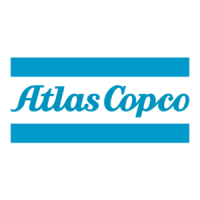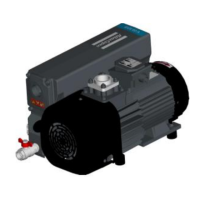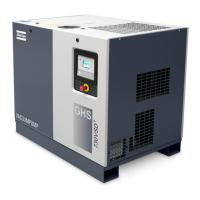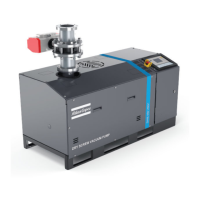Instruction book
6996 0224 30 39
Be sure there is no back pressure on the exhaust line of the vacuum pump. Vacuum pumps are not
specifically designed to compress exhaust gas above atmospheric pressure. Significant back pressure
can overheat the pump and cause motor overloading. Back pressure on the pump should not exceed
0.15 bar(e) under normal operating conditions.
Maintain system seals on a regular basis. Damaged O-rings and gaskets must be replaced
immediately. All flange faces must be free of dirt, lubricant and scratches.
Do not use collapsible tubing to plumb the vacuum system. Any restrictions in line diameter caused by
tube collapse will reduce available pumping capacity.
In multiple pump installations, check valves should be installed in the inlet piping. This will prevent fluid
from being drawn from an 'off' unit into an operating unit. Check valves should be properly sized so as
not to "chatter" during operation. Spring loaded, elastomer seated check valves are recommended.
These should be mounted in a horizontal flow orientation. Using properly sized actuated valves is even
a better solution. This generally results in a lower pressure drop when open and in a better sealing
when closed.
Vacuum gauge ports and gauges should be installed in each leg of central vacuum piping. This
provides a diagnostic tool for troubleshooting both the application and any pump related problems.
Make sure that no temperature sensitive parts (plastic, wood, cardboard, paper, electronics) will touch
the surface of the vacuum pumps.
Ambient and inlet temperature may never exceed the limits of the pump's working range. Make sure
the installation location is vented such that a sufficient cooling of the vacuum pump(s) is available.
Special recommendations for using oxygen prepared pumps, filled with PFPE fluid
At the customer’s site, it must be taken care of the following points:
Pump exhaust must be collected & gases handled according applicable regulations.
Use of only genuine spares & consumables. Use only dedicated PFPE Service kits for oxygen
pumps.
Accessories retrofitted on oxygen pumps must be hydrocarbon degreased using an adapted
solvent. Take all required precautions.
Use of PFPE fluid provided by Atlas Copco only.
Making sure that PFPE fluid level in the pump is correct before switching on.
When changing the exhaust filters, the pump must be operated for half an hour with closed intake
but open GB sucking ambient air or inert gas for wetting the exhaust filters with PFPE.
In case no gas ballast is provided, let the pump run for 5 minutes at atmospheric pressure on
ambient air or inert gas.
For the pumps using perfluoropolyether (PFPE) as lubricant and when handling
PFPE observe the following:
During thermal decomposition at temperatures over 290 °c toxic and corrosive
gases are released. This is not likely to happen in a GVS A pump. When handling
PFPE keep it way from open fires. Do not smoke with PFPE on your fingers.
Touch the inner sections of the pumps only while wearing clean gloves, and use
clean tools; do the necessary work in clean and dry rooms.
The grease of the bearings has to be changed once a year for an operating time
higher than 5000 h per year or every 5000 hours for an operating time lower than
5000 h/year.
Clean the bearings before regreasing.

